Trapping is easier than you think.
Have you seen your turkey numbers decline, and sign of raccoons taking over your deer feeders? Are you seeing too many coyotes on your trail cameras? Do you keep chickens and keep losing a hen or two to a four-legged predator?
You may want to consider getting into trapping, and the truth is, it’s way easier than you think. Here’s how I started, and how you can make plans to do the same this fall and winter.
Not sure if trapping is for you?
I put off getting into trapping for a long time. The interest was there, but I didn’t know where to begin. Nobody in my family did any trapping so I didn’t have a good resource to get started. To me, two big things that stood in the way of starting.
- I thought all trapping needed to look and feel like Jeremiah Johnson longlining.
- It always felt a lot like fly fishing – nuanced, complicated, and overwhelming.
What changed my mind about these things? Social media.
Between the social platforms and YouTube, I started running into trapping content among my hunting content. What I saw wasn’t the Marty-from-Mountain-Men experience I had in my head. I saw guys trapping on their own five acres, or their hunting lease. It wasn’t running longlines to support the hat trade in New York. Largely, I saw hunters trapping what they could, where they could, to support good habitat management.
Because these hunters were putting content on social media, I was able to see for the first time how these sets were made and what went into setting a trap. For decades, maybe even centuries, this kind of information tightly held and protected by those successful trappers. With social media, trappers were eager to share this information to bring more trappers into the fold.
That’s when I decided I would make the leap and start trapping.
What to target?
Until you know what you want to trap you can’t make any more decisions. For me, I was seeing too much activity from furbearers and predators on my trail cameras. Like many of you, my hunting focus is on turkeys and deer. We are starting to hear more about declining turkey numbers across the country, and evidence continue to pile up about the impact coyotes have on deer populations, especially during fawning season.
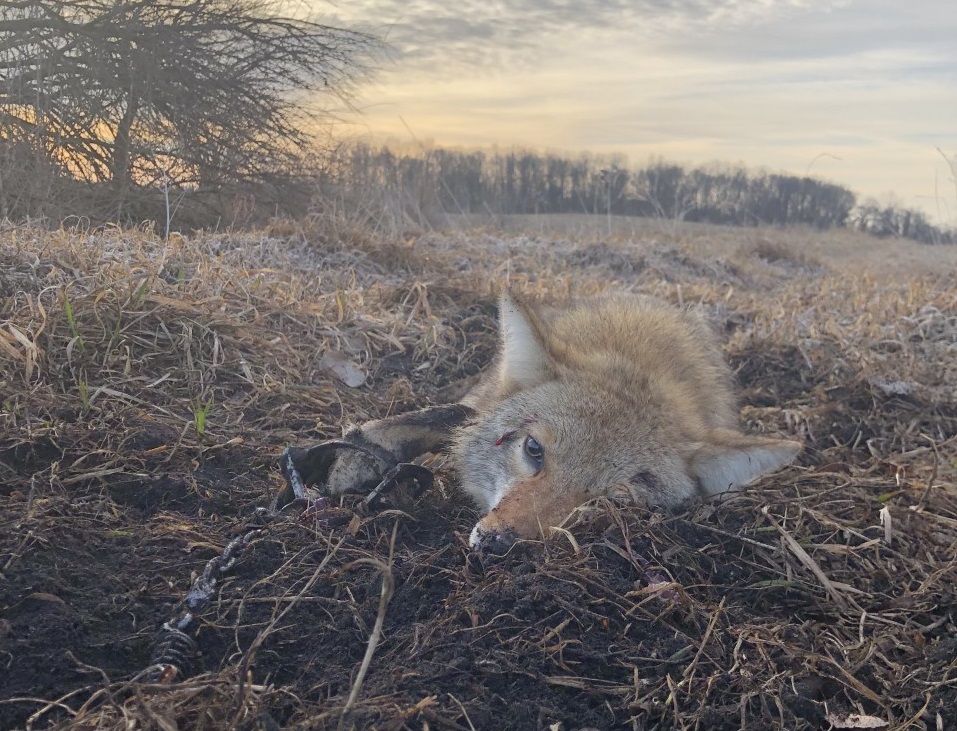
Too often I was seeing multiple raccoons hammering the edges of corn fields or the same coyote passing by a camera every couple days. What used to be somewhat rare was becoming a common occurrence. Knowing that both raccoons and coyotes will happily pillage the nest of a turkey, and that coyotes are hard on fawns during the spring, I could see what I needed to focus on for overall habitat management.
That was how I decided what to trap.
Now what?
Learn
It’s time to learn and shop. In that order.
The very best resource is someone who can sit with you and show you the ropes. This isn’t always an option. It wasn’t one that I had. So, I went to the internet. I already followed and knew of some trappers in my social circle, so I started paying more attention to people like Skye Goode, or my friend Kent Weil, who were sharing their trapping experiences. Facebook has local and national groups dedicated to trapping. I joined those and looking at the conversations happening there. I reached out friends who trapped. They weren’t close enough for me to tag along, but I was still able to get insight and tips for how to get started.
The best resource I found was YouTube.
I watched dozens of videos from a handful of folks before I landed on what became my favorite two channels: Coon Creek Outdoors and Hoosier Trapper Outdoors.
Since I am in Indiana, Hoosier Trapper Outdoors made a lot of sense. The terrain that you will trap in is going to dictate a lot of gear and strategies. Since they are in Indiana as well, it made a lot of sense. The same is largely true of Coon Creek Outdoors. Southern Illinois isn’t so different from Northern Indiana. In these two channels I found information relevant to my situation, and channels that had significant amounts of content I could learn from. Some of it was very how-to oriented, while the balance was more follow-along content where you could see what it looks like on a trapline.
Shop
If you know what you want to trap, and you’ve taken some time to investigate how to trap that animal, you probably have a pretty good idea of the gear you are going to need to get started. It’s probably a pretty big list. Overwhelming even. I’m no expert, but I am a fellow beginner. Here’s my advice.
- K.I.S.S. – We’ve all heard it before. Keep it simple, stupid. You don’t have to become Jeremiah Johnson overnight. It doesn’t take dozens of traps to run an effective line. You can dip your toe into the trapping waters. It doesn’t have to be all or nothing.
- Give yourself time – Get your gear well ahead of season. Take some time to learn it. I set traps in my garage and yard for a month before I tried to set traps in the field. If you are new to traps, you will need some time to get acclimated. Don’t rush it.
- Make a plan – Sit down and make a list of where you plan to set traps. Think about how to do it efficiently. Gas prices are up and fur prices are down. Fur isn’t likely to pay many bills. More than likely you’re doing this for the habitat benefits not some big fur check in March. Sure, it may take 5 dozen traps to set for all the species at all the locations you want, but what if you only set one farm, or one part of a farm at a time. Trap on it for a few weeks, move to a new location. Be efficient, make a plan. Buy accordingly.
- Ask questions – I can say with 100% honesty, in all of my outdoor endevors, no group of folks have been more willing to share information and help than trappers. Honest questions and curiosity are met with willingness to educate and inform. If where you plan to buy equipment from isn’t willing to take the time to help you shop, I suggest finding a new place to shop. There are too many great places out there to deal with a rough outfit.
Trapping Shopping List
Keeping all of that in mind, now you have to at least get your hands on:
- Traps
- Tools
- Bait
- Lures
You may also need:
- Packs/Bags/Buckets
- Fur handling equipment
I know it seems like a lot, but you can keep it small to get going and it really isn’t that bad.
Where to Buy Trapping Supplies
There are loads of great places to buy trapping supplies. Your local sporting goods store or co-op may even have some gear you can pick though. If you joined those groups you may be able to ask if anyone has some gear they are looking to move on from and save some money over going new. Personally, I like to find one or two places that I trust and give them my business, regardless of what I’m shopping for. I did the same for trapping.
Hoosier Trapper Supply
When I purchase trapping supplies it almost always comes from Hoosier Trapper Supply. Charlie, Justin and the rest of the team have a sterling reputation in the trapping world. Since they are located in Indiana I get super fast shipping, and they almost always have what I want. I am partial to their Top Dog bait, and pretty much only use their Leatherwood Creek lures too. The main reason? I can see how they use their stuff on their YouTube channel. It has shortened my learn curve exponentially.
Add in that it’s a small business, in my home state, and it’s a no brainer. That whole group at Hoosier Trapper Supply is top notch. If you’re in the Midwest I can’t recommend them highly enough. They literally have everything you need, and for the beginner, even offer some packages or kits to get you started without any of the guesswork.
F&T Fur Harvester’s Trading Post
On the rare occasion that HTS doesn’t have what I need, the first place I go is F&T Fur Harvester’s Trading Post. I’ve yet to need something that I can’t find at one of these two locations. It’s another outfit that came highly recommended from the people that I talked to, and my experiences have been good.
I was able to visit with the folks at both HTS and F&T while at the NTA National Convention in Lima just a last week and can absolutely say that everyone there is committed to making sure that you have the information and gear you need to make the most of your time on the trapline.
I highly recommend both of these outfits to help with your trapping needs. That said, you may have a local shop that is perfect for you or better for your location. This is just a starting point.
What Did I Do?
Not that it really matters, but since we’re all friends, I’ll share how I got started and maybe it will be of use.
I wanted to focus on raccoons to support turkeys first. Coyotes were on my list as well, but I needed to ease into it. Two years ago I started with a half dozen Duke dog-proof traps to get my feet wet. Talk about easy to use. I had a catch on my first day, which was only a few days before the end of the Indiana season. Even still, that was more than enough to get me hooked, and to start making big plans for what was next.

The following year I added quite a bit. Once you get into it, you’ll find this trapping thing quite addicting. For coyotes I added Duke 550 foothold traps. I also added some Duke 1.5 foothold traps. Dog-proof traps work great for baited sets, but I had a few places where a blind set could work too, so I wanted to add the footholds specifically for racoons as well.
As I go into this year I have a modest trap selection by many standards, but it should still be enough to keep me busy.
1 dozen Duke Dog-Proofs (raccoons)
1 dozen Duke 550 footholds (coyotes)
1/2 dozen Duke 1.5 footholds (raccoon/opossum/mink/fox/whatever)
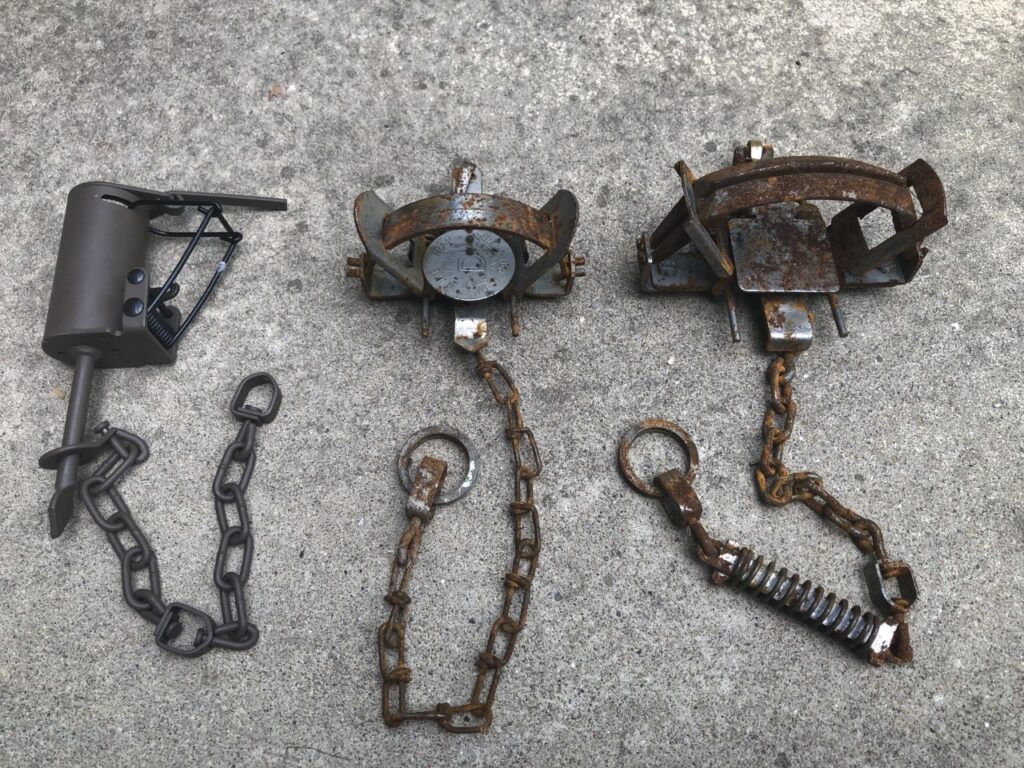
In Northeast Indiana, this gives me options to set for pretty much anything I am going to run into. It’s enough traps to keep me busy, but I’m not overinvested. Traps sitting in your garage or shed because you don’t have anywhere to put them don’t do you any good. You need the number of traps you can keep in the field and properly run. No more, no less.
Learn By Doing
I am no trapping expert. Far from it. Maybe that’s why you’re reading. You wanted some insight from another relative newbie on how to get the trapping ball rolling.
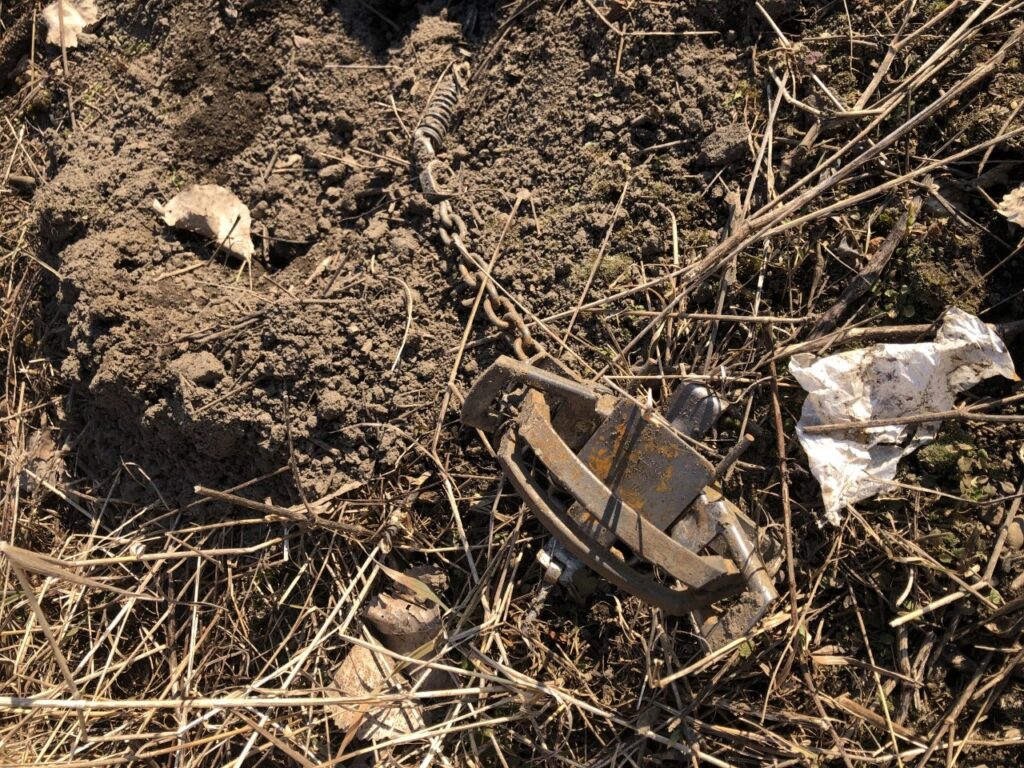
My best advice, beyond the above, is just to get out there and do it. Once you have learned the basics from reading or watching videos, you just need to get out there and set traps for yourself. There’s a real learning curve there. Some things are easier than others. Getting a raccoon in a dog-proof isn’t foolproof, but it sure is easy when you compare it to trying to convince a coyote to step on your pan.
These days, our habitat and the species that call it home need all the help they can get. Trapping plays a crucial roll in that management. Moreover, no part of the outdoors is under more attack from antis and crazies, than trapping. Educate yourself about trapping. Become a trapper. Support trapping. A hunter that doesn’t support trapping is just playing the part of Neville Chamberlain, hoping the crocodile eats him last.
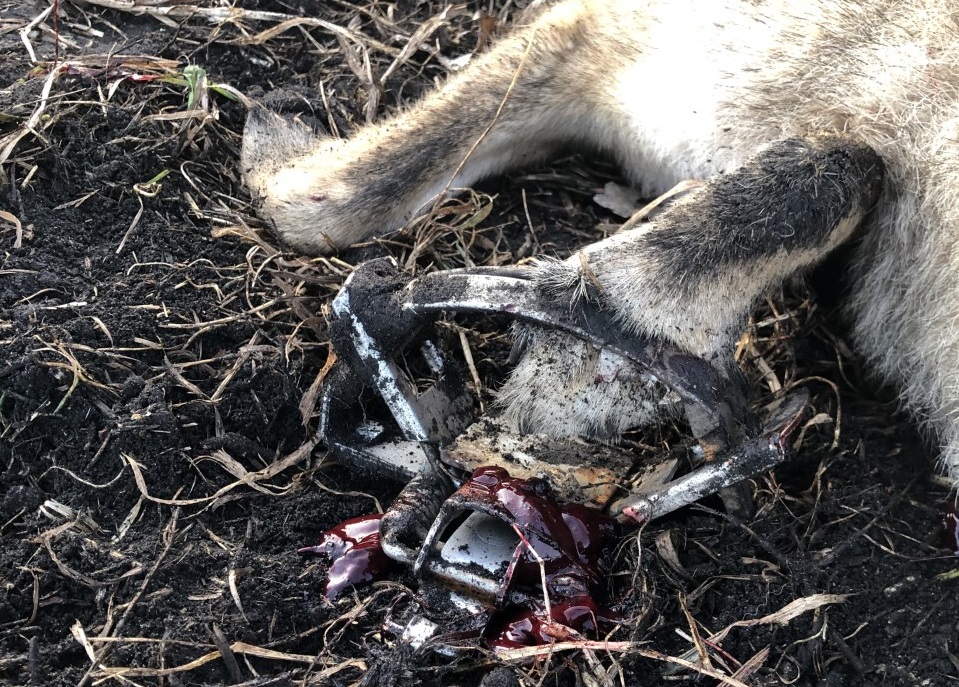
Trapping FAQ
I had so many questions when I got into trapping, and honestly still do. These aren’t set in stone, but here’s my take, for what that’s worth.
Do I need to dye and wax my traps?
Ask five trappers, get six different answers. Do you need to? No. Are there benefits? Yes. I don’t want to use the chemical treatments, so this year I will be doing the walnut dye and wax method. That said, I ran my traps the first year without doing anything but getting the machine oil off of them so they could get a good coat of rust, as you can see in the picture above.
How do you anchor traps?
It depends on what I’m trapping. For canine sets, I’m using the heavy-duty berkshire earth anchors. Some of the ground I trap in is a little soft, so I wanted the larger stake. For my dog-proof traps I don’t really want to drive stakes that I have to pull if I don’t have to. I have taken to wrapping the anchor around a sapling or downed branch that is near the trap and hooking it through the loop on the cable. It’s just faster and easier than driving and pulling stakes for raccoons, to me.
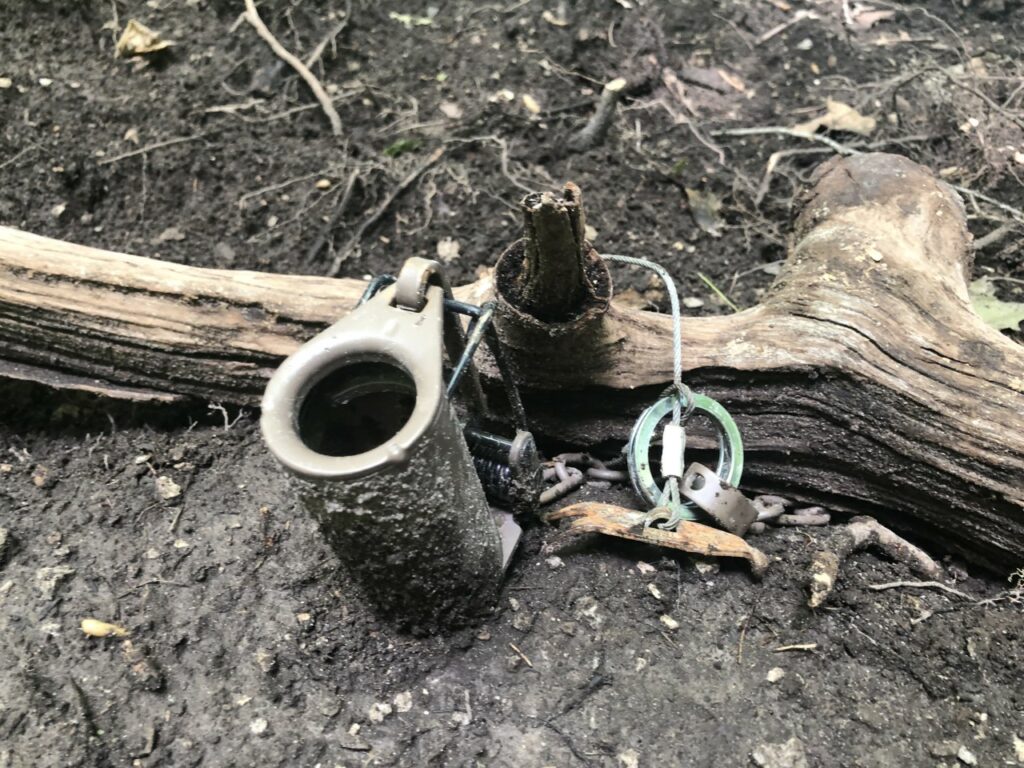
What do you do with the animal and/or fur?
This is a very common question. A lot of the answer is in what you trap. A beaver for example, the fur is down, like most, but beaver castor is higher than ever. Raccoons are near historic lows. Even coyote furs are depressed since Canada Goose announced they wouldn’t be trimming with coyote fur anymore. Even the heavy western dogs are seeing their prices take a hit.
If you are really planning on getting into it, find your local fur buyers and get to know them. See what they have market for, what their preferences are, and if you want to start getting kind of serious, try to become “their guy.” Local buyers will sometimes take green furs, or skinned but not fleshed and dried. You can also ship to the NAFA auction and roll the dice with that. Checks may take months or years though and those will need to be fleshed, stretched and dried.
If you are especially ambitious you can also treat the fur yourself. Maybe you just tan the cased hide for wallhanger taxidermy pieces. Maybe you get really creative and make things like hats or gloves and sell those. You’ll have a lot more time and effort in doing so, but you can also get more money for your time.
Sadly, some guys even just start bone piles where they put the carcasses. Be sure you aren’t running afoul of any local laws or ordinances, but typically furbearers aren’t subject to wanton waste laws because many are also considered varmints.
Parting Thoughts
If you’ve been on the fence about starting trapping, hopefully you found some valuable information and resources here. I have enjoyed the learning that has come from spending time in the field trapping. It gives you a totally new respect for the animals you are pursuing, and makes you look at your properties in a totally new way. I sincerely hope you will consider joining the ranks of trappers, and strengthening a part of our heritage and outdoor pursuits that we all love so much.